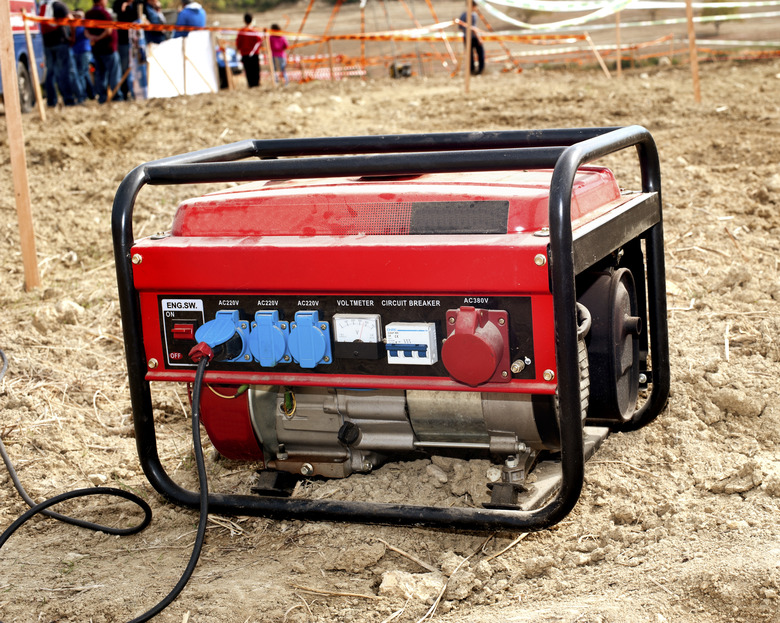How To Convert Amps To Watts On Gas Generators
The power output of the standard gasoline generator is described in terms of thousands of watts, or kilowatts. In the event that you need to determine if a gas generator meets your energy needs, you may have to convert the power requirement of the appliances to be run from amperes (amps) to watts.
Determining if Power Demand Can be Met
Step 1
The wattage of a gas generator is the amount of power it is capable of supplying. This power output can be expressed in terms of: Watts (W) = Amps (A) x Volts (V). With the standard voltage of a U.S. appliance being either 120 or 240 volts, start by totaling up the amperage requirement of the 120-volt appliances you want to power. For example, a 17.4-cubic-foot refrigerator/freezer might draw 9.7 amps and a 13-inch TV might draw 4.5, for a total of 14.2 amps.
Step 2
Total up the amperage requirement of the 240-volt appliances. For example, if you have an electric range that requires about 9 amps and a clothes dryer that requires 28 — your total amp requirement for 240-volt appliances is 37.
Step 3
Multiply each amp total by the appropriate voltage to get total wattage. For 120-volt appliances, multiply the total by 120. For a 120-volt total of 14.2 amps, W = V x A = 120 x 14.2 = 1,704 watts. For 240-volt total of 37 amps, W = V x A = 240 x 37 = 8,880 watts.
Step 4
Add the 120-volt wattage total and the 240-volt wattage total to get the total power demand of the gas generator. So, if the 120-volt total is 1,704 watts and the 240-volt total is 8,880 watts, then total demand is 10,584 watts. If you are using a 15-kilowatt generator, the power output of 15,000 watts should be a sufficient supply for this total.
TL;DR (Too Long; Didn't Read)
Some appliances require a higher surge of power at start-up and then run at a much lower wattage. Be sure to note the start-up power demand in any calculations.
Cite This Article
MLA
Smith, Brett. "How To Convert Amps To Watts On Gas Generators" sciencing.com, https://www.sciencing.com/convert-amps-watts-gas-generators-4797213/. 24 April 2017.
APA
Smith, Brett. (2017, April 24). How To Convert Amps To Watts On Gas Generators. sciencing.com. Retrieved from https://www.sciencing.com/convert-amps-watts-gas-generators-4797213/
Chicago
Smith, Brett. How To Convert Amps To Watts On Gas Generators last modified March 24, 2022. https://www.sciencing.com/convert-amps-watts-gas-generators-4797213/
